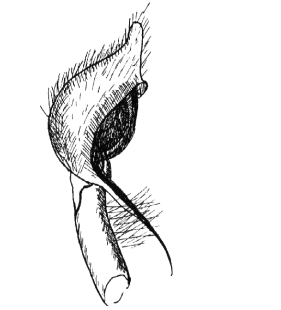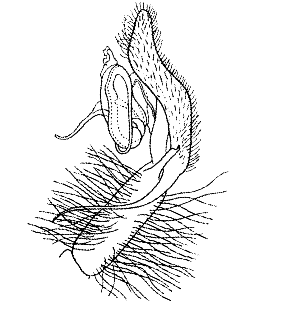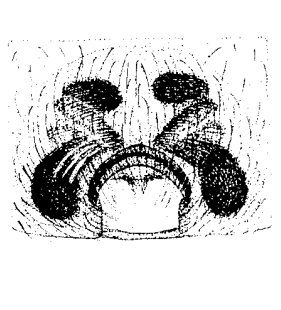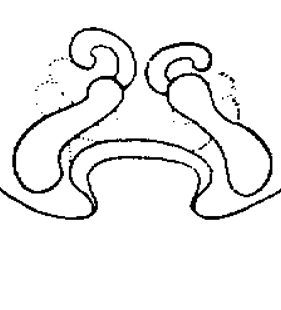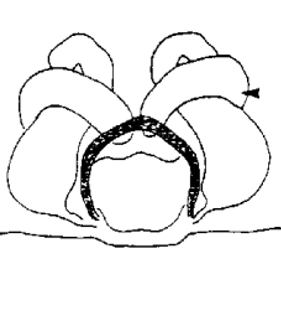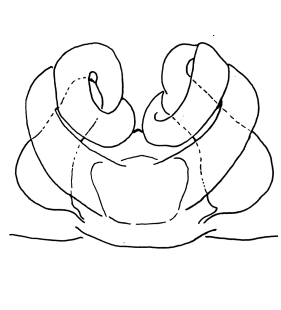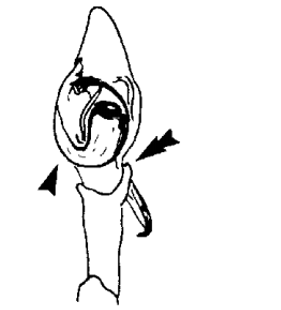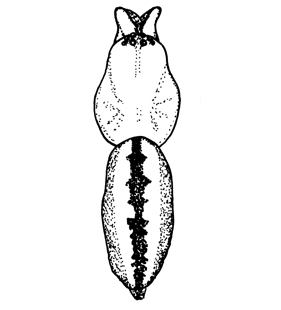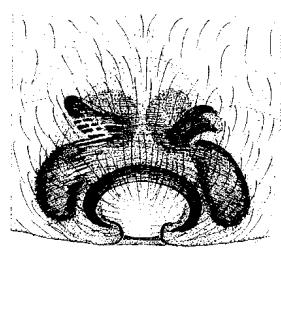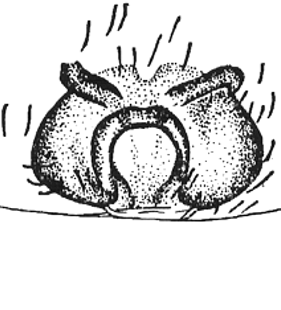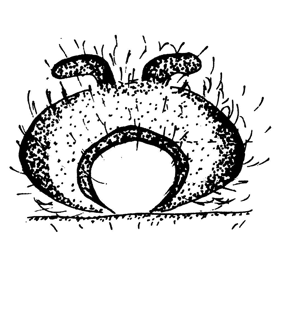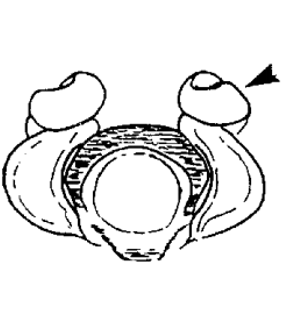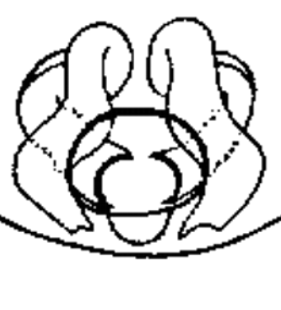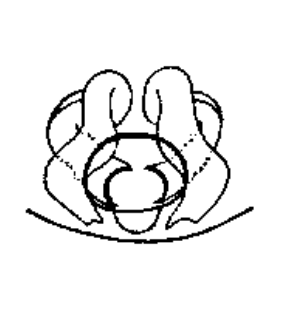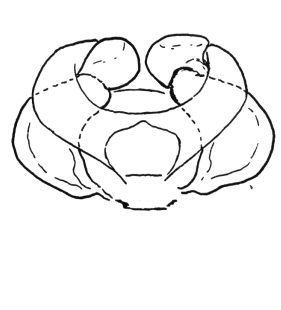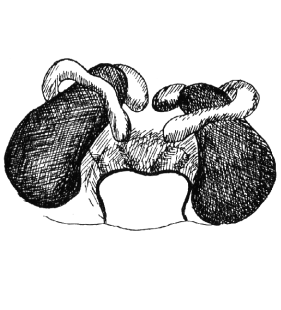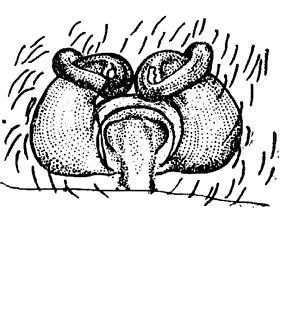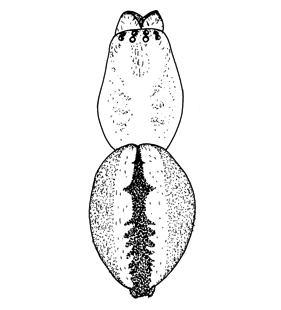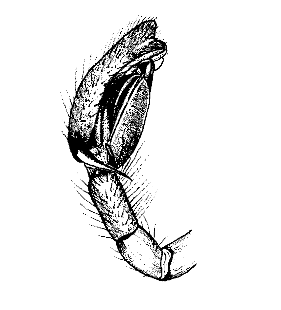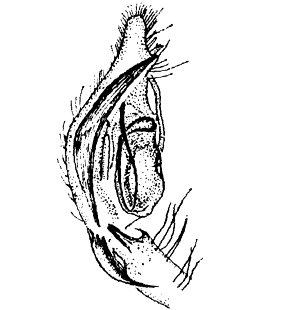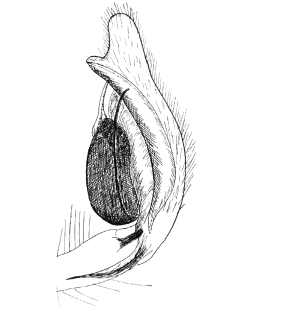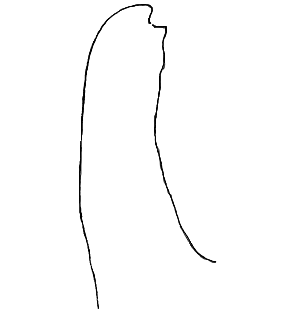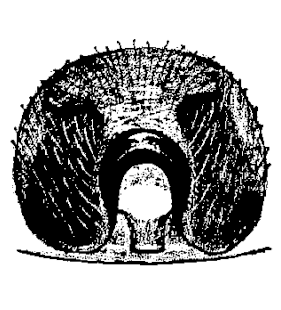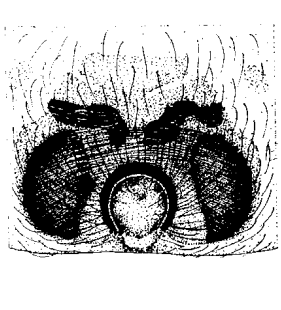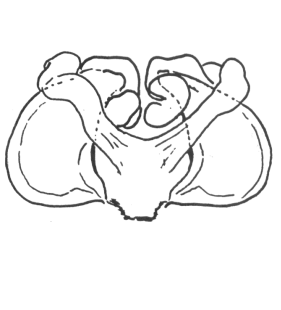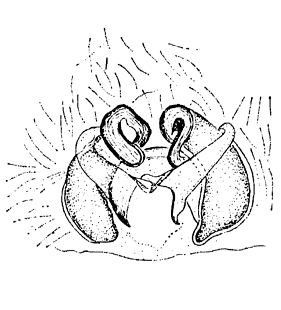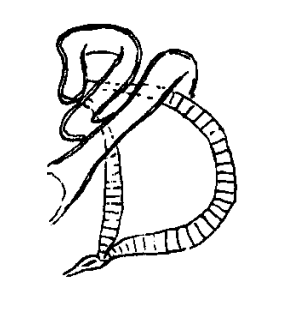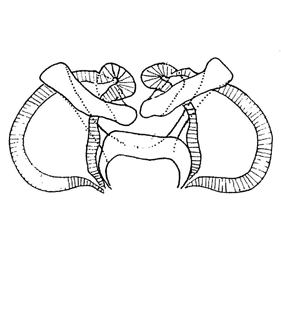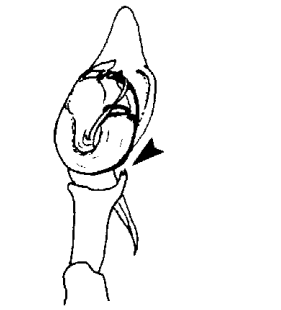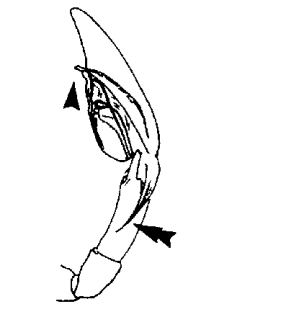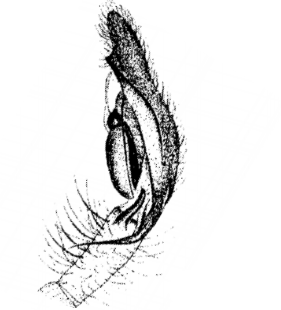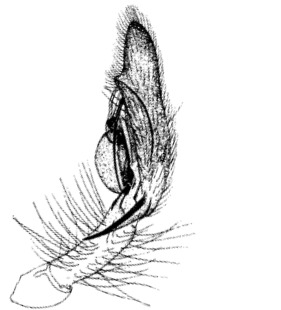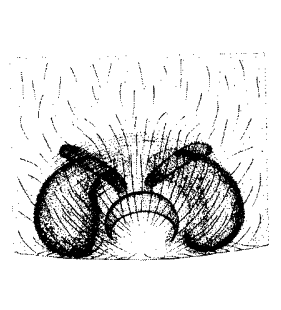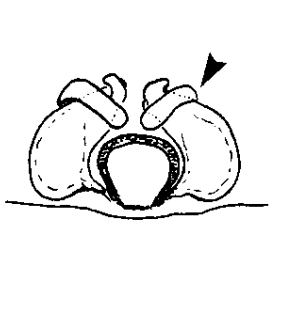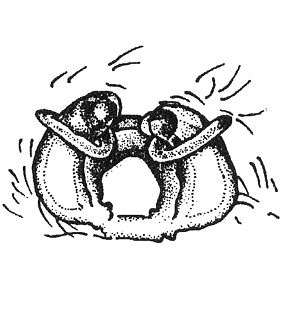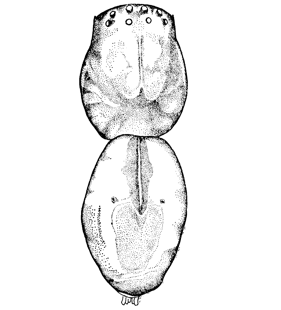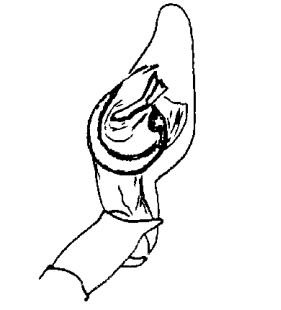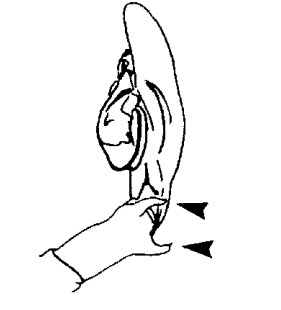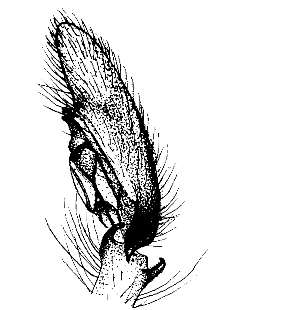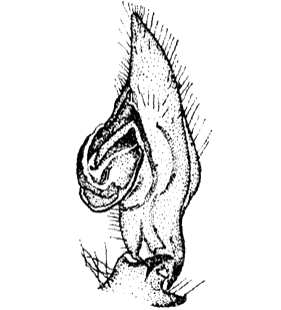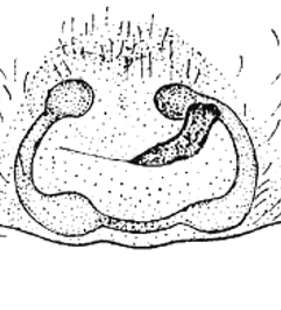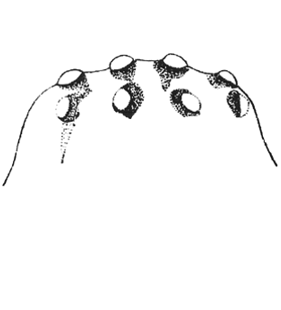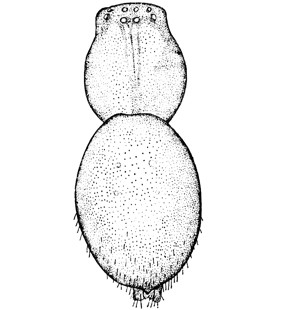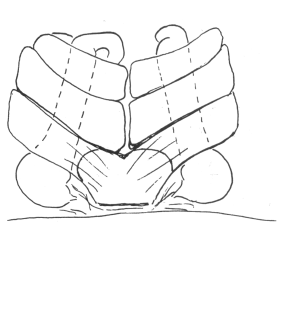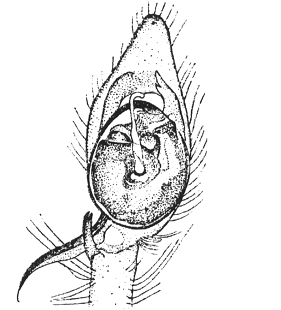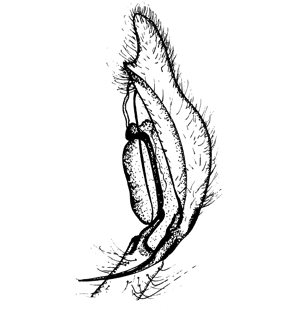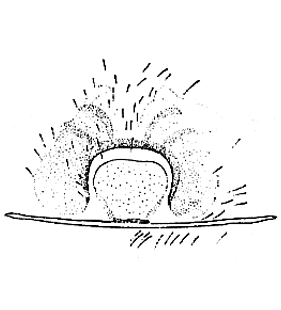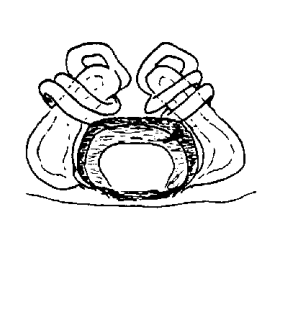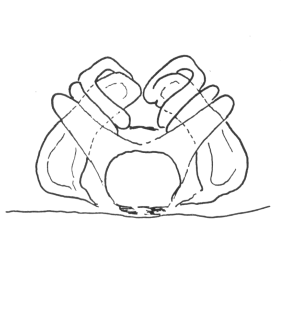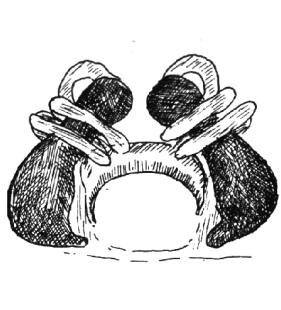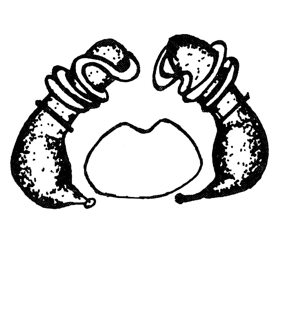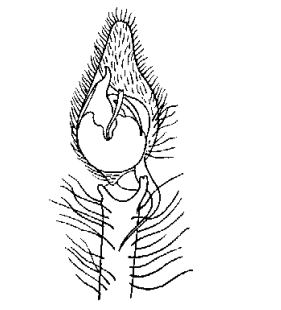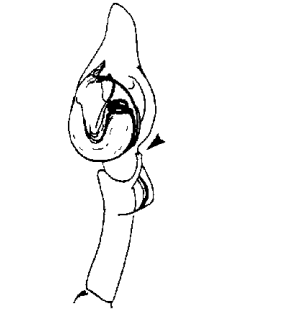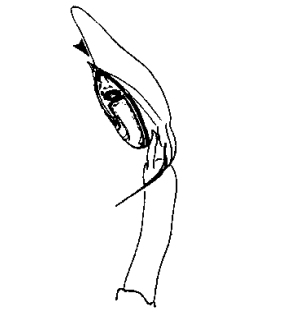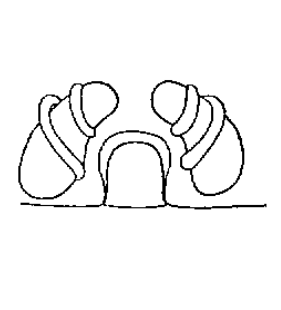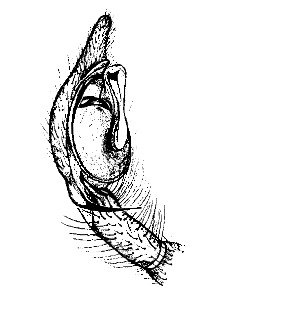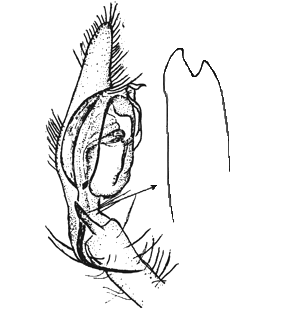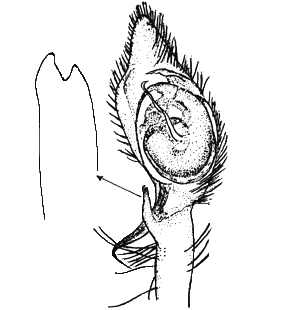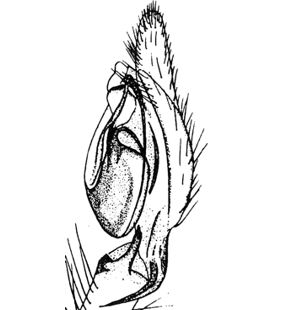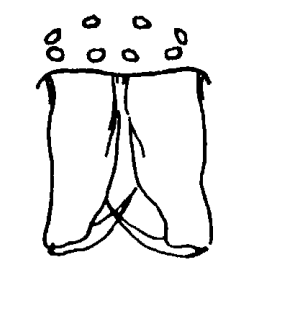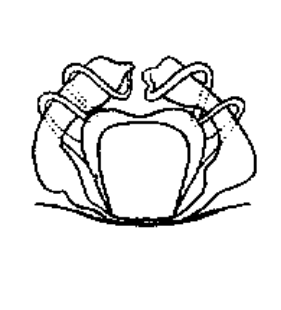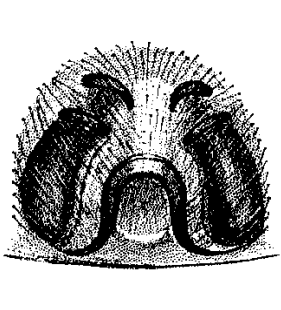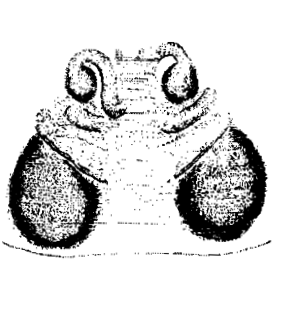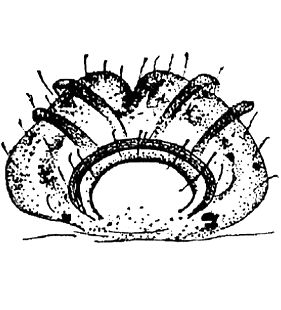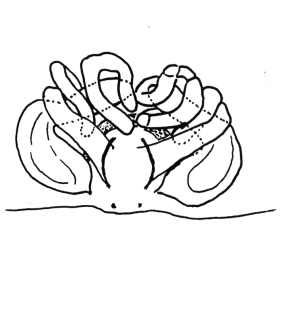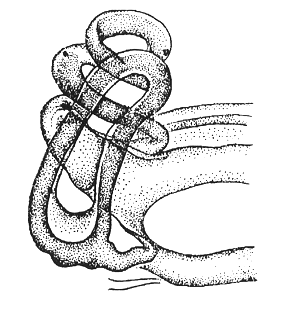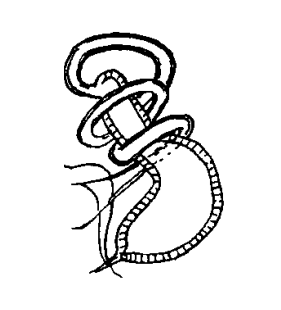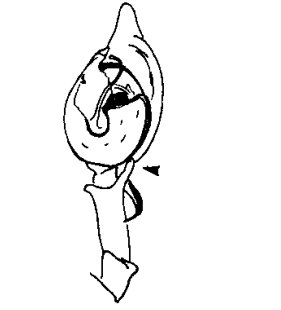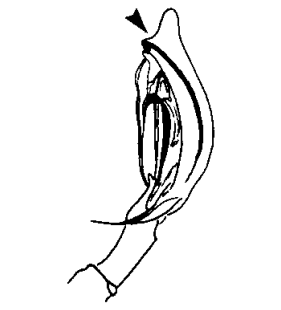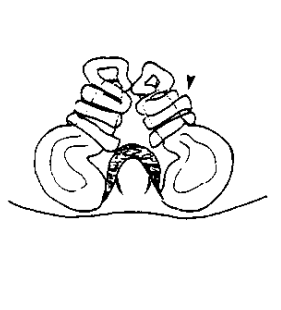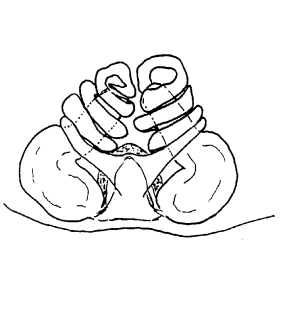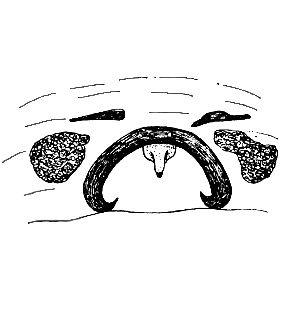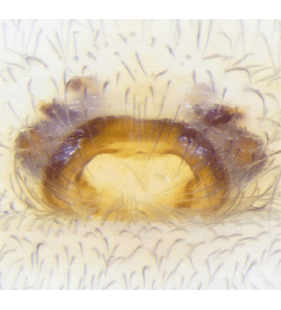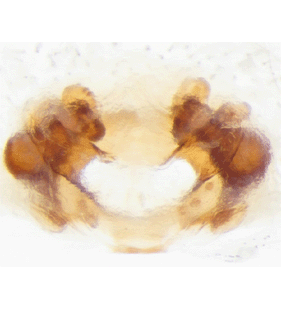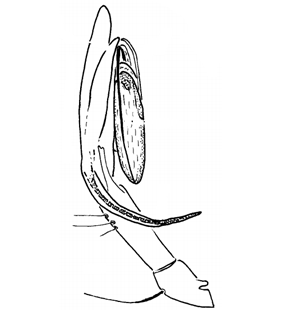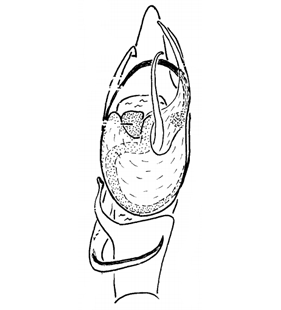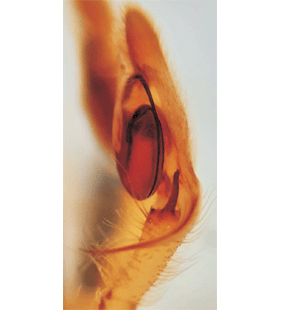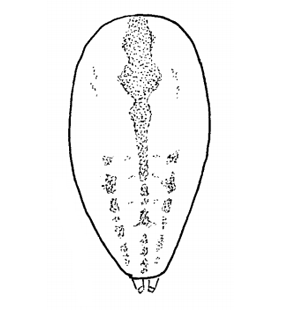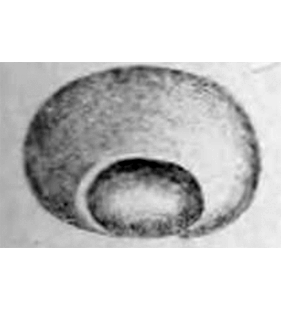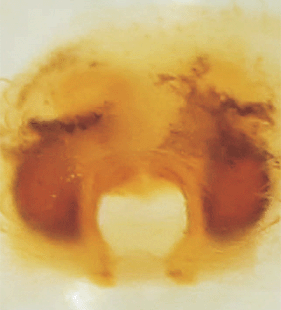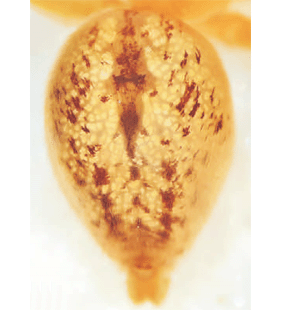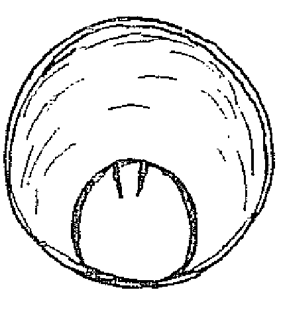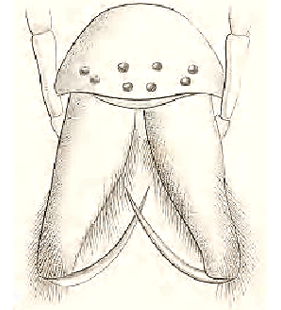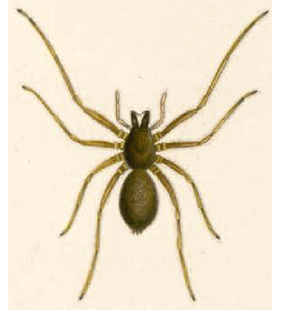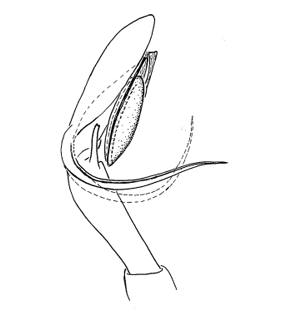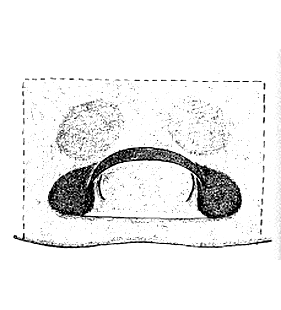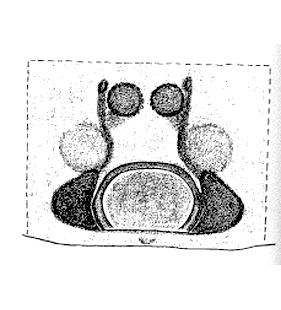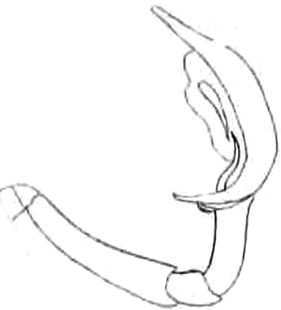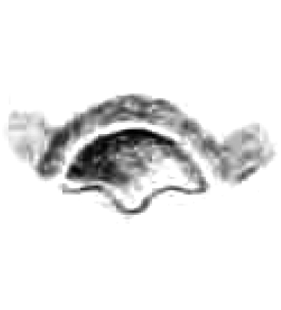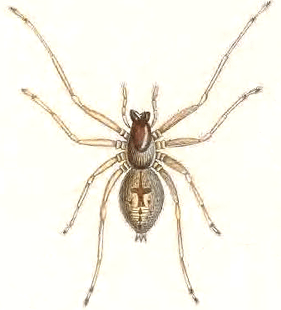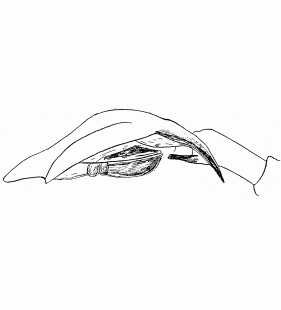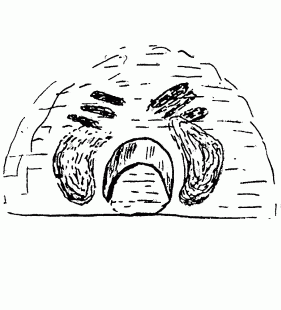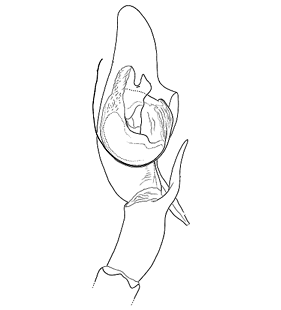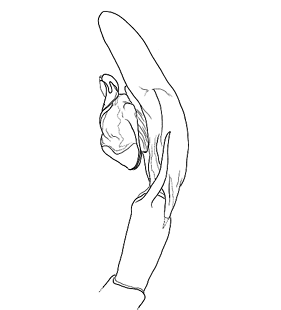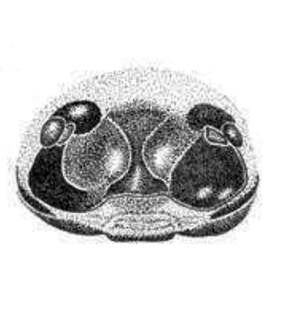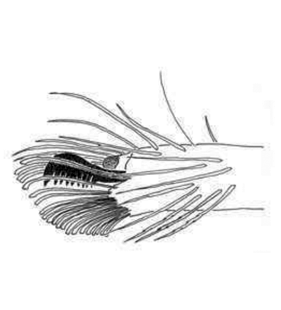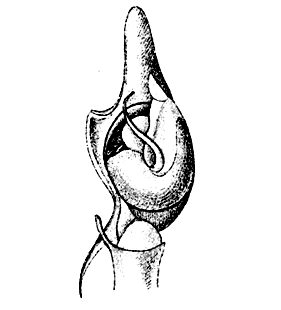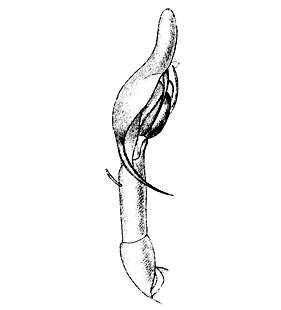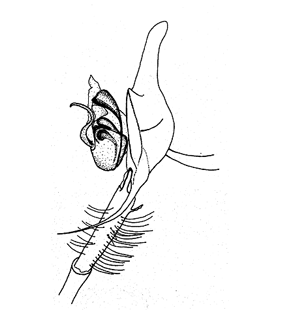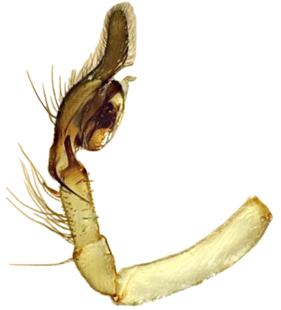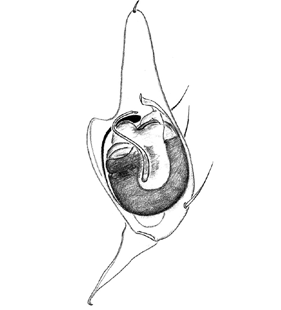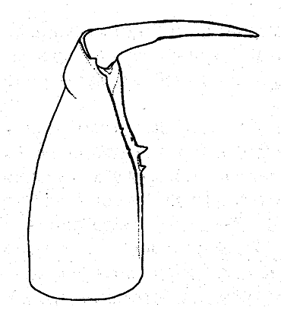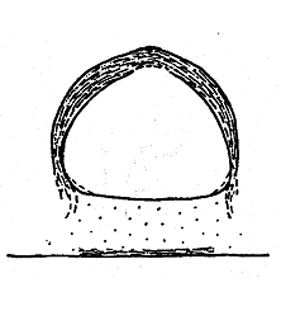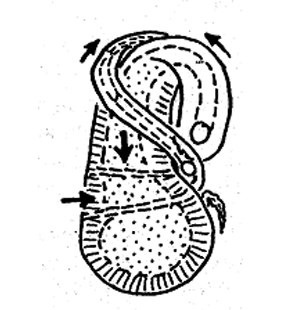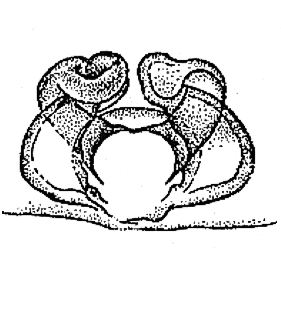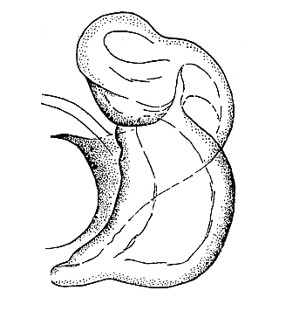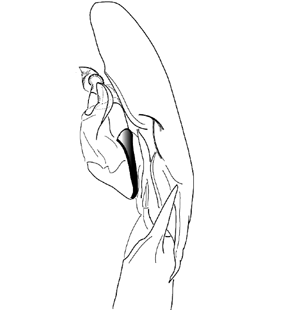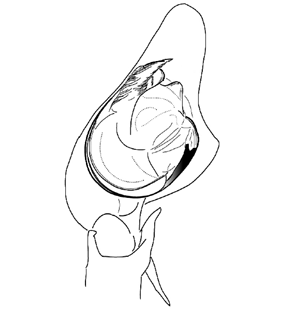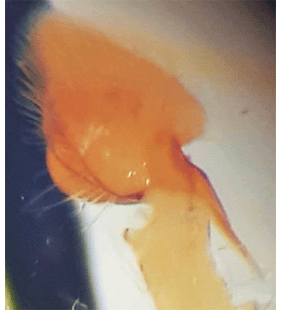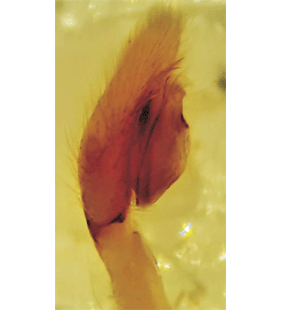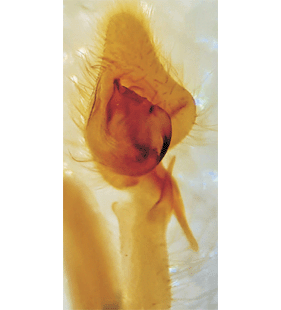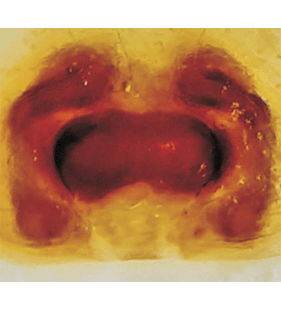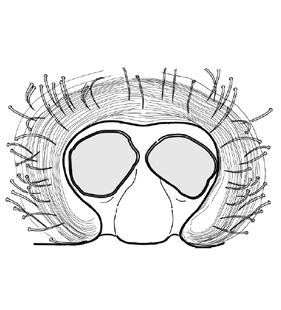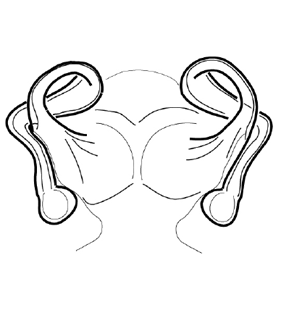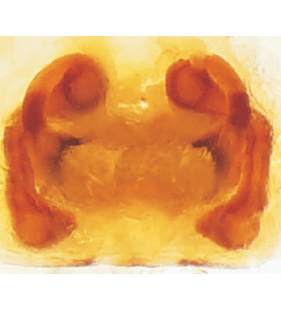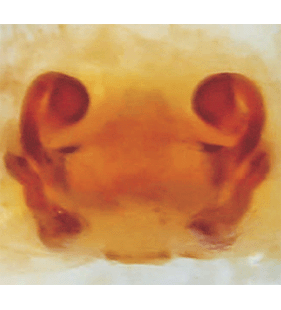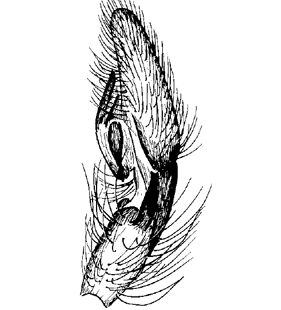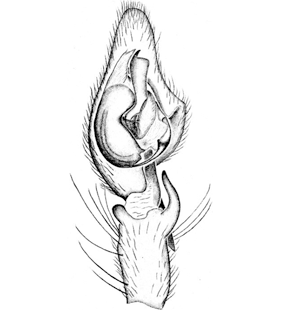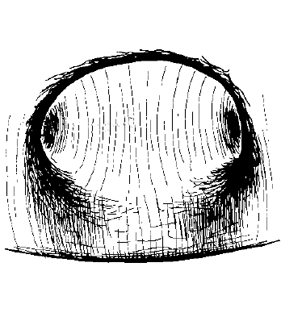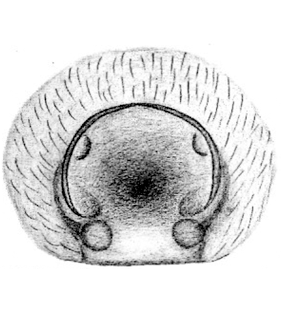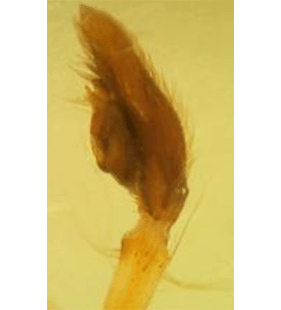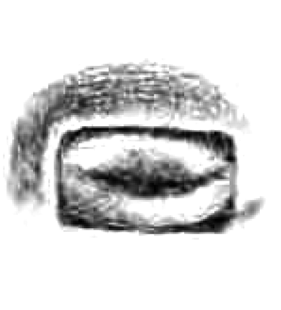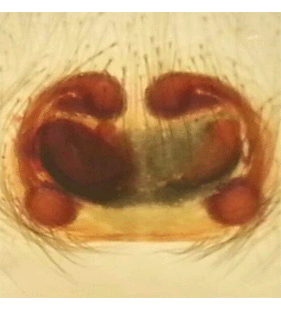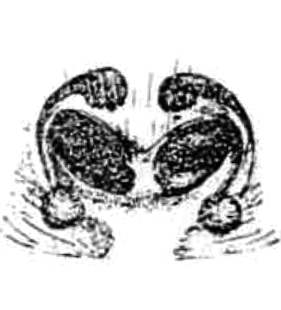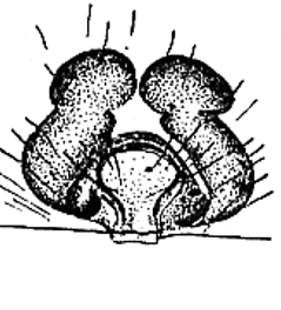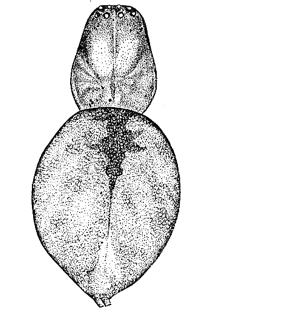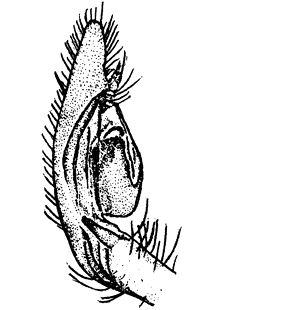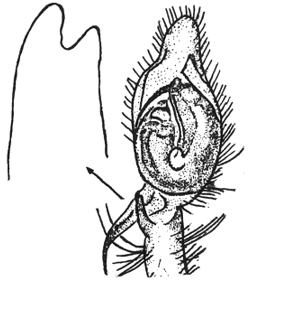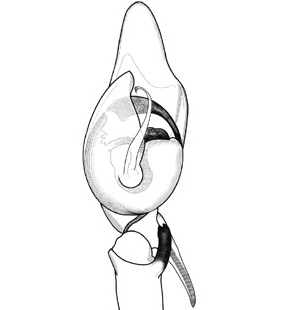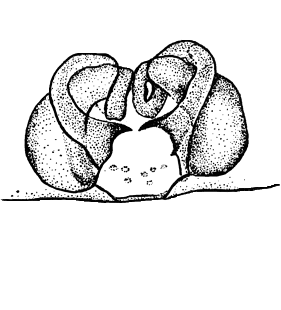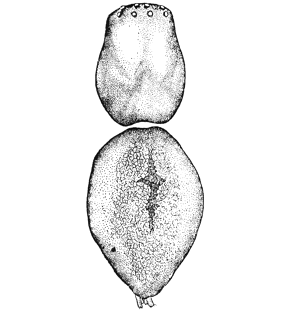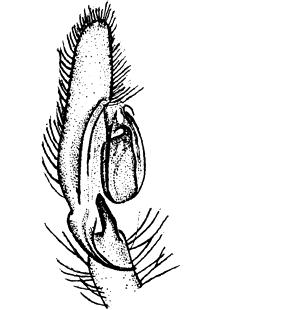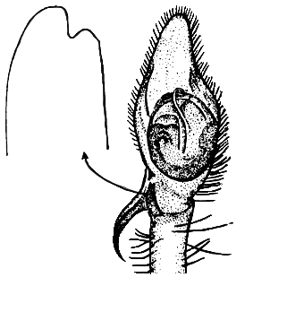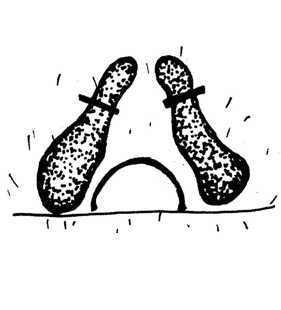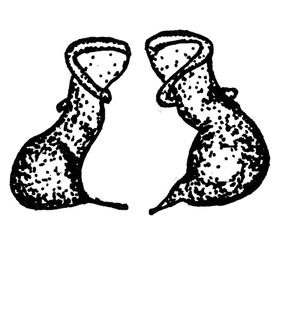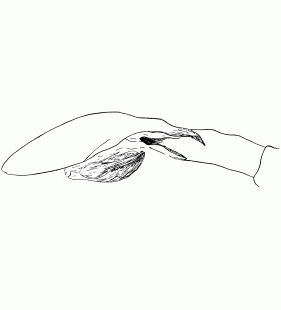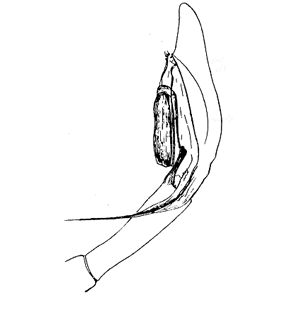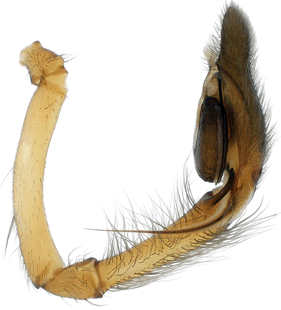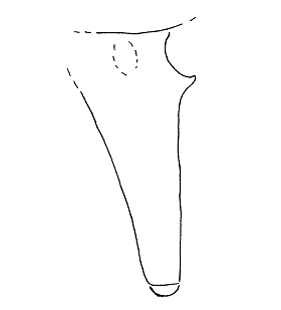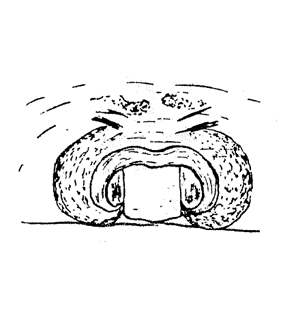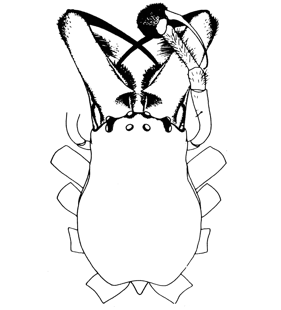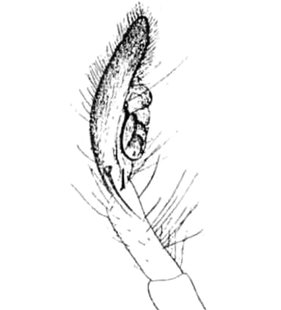Cheiracanthiidae: Cheiracanthium C. L. Koch, 1839
Key not complete! Further species listed at the end of key |
In case you find an error or have a specific suggestion, please follow this link: click
|
|||||||
| 1 |
Opisthosoma dorsally yellow-brown with a red-brown longitudinal median band or pattern which can be seamed with light yellow (colour can be faded in old preserved specimens) |
|||||||
| - | Opisthosoma dorsally also yellow-brown or yellow-green to grey-green but without pattern or only with a grey cardiac mark respectively | |||||||
| 2 (1) |
Longitudinal band not reaching beyond anterior half of opisthosoma; male chelicerae strongly outwardly bulged distally and the inner side indented; tibia of male pedipalp approx. twice as long as patella; cymbial spur little bit smaller than cymbium; bulbus with ± roundish shape in ventral view; vulva: entrance ducts with wide lumen and approx. two times twisted around receptaculum seminis Cheiracanthium oncognathum Thorell, 1871 |
|||||||
| - | Longitudinal band reaching spinnerets | |||||||
| 3 (2) |
Outer cymbial margin of male pedipalp widened and laterally recognisable as protrusion above bulbus; cymbial spur tapering and with pointed ending; bulbus longer than wide in ventral view; entrance ducts of vulva distinctly twisted around anterior parts of receptacula seminis | |||||||
| - | Outer cymbial margin of male pedipalp not widened, not forming a protrusion above bulbus; cymbial spur less tapering with blunt tip; cymbial tip > 1/3 of cymbium (without spur); bulbus ± round in ventral view; tibial apophysis with equally long branches; entrance ducts of vulva twisted around receptaculum seminis at tip Cheiracanthium pennyi O. Pickard-Cambridge, 1873 |
|||||||
| 4 (3) |
Male pedipalp: cymbial tip < 1/3 of cymbium (without cymbial spur); cymbial spur hardly reaching beyond 1/2 of tibia; entrance ducts of vulva coiled Cheiracanthium erraticum (Walckenaer, 1802) |
|||||||
| - | Male pedipalp: cymbial tip > 1/3 of cymbium (without cymbial spur); cymbial spur reaching distinctly beyond 1/2 of tibia; entrance ducts of vulva forming a single arc Cheiracanthium montanum L. Koch, 1877 |
|||||||
| 5 (1) |
Male pedipalp with 2 equally long tibial apophysis; epigyne without epigynal groove Cheiracanthium mildei L. Koch, 1864 |
|||||||
| - | Male pedipalp with only one distinctly developed tibial apophysis; epigynal groove present, anterior margin with dark sclerotised arc | |||||||
| 6 (5) |
Male chelicerae outwardly bulged distally and inner side indented; cymbial spur at least as long as pedipalp tibia; length of pedipalp tibia approx. 4 times length of patella; vulva: receptaculum seminis long, approx. parallel to longitudinal axis of body; entrance ducts with wide lumen, twisted approx. three times around receptaculum seminis Cheiracanthium effossum Herman, 1879 |
| ||||||
| - | Male chelicerae distally diverging or parallel; cymbial spur < pedipalp tibia; vulva: receptaculum seminis sloped with respect to longitudinal axis of body; entrance ducts with narrow lumen | |||||||
| 7 (6) |
Male chelicerae with 2 conical humps basally on inner margins; cymbial tip smaller or equal 1/3 of cymbium (without cymbial spur); outer cymbial margin extended; length of male pedipalp tibia approx. 1.5 times length of patella; epigynal groove with broad, dark margin Cheiracanthium elegans Thorell, 1875 |
|||||||
| - | Male chelicerae without conical humps basally on inner margins; epigynal groove without or only with narrow, dark margin | |||||||
| 8 (7) |
Tibial apophysis with equally long branches; cymbial tip > 1/3 of cymbium (without cymbial spur); outer cymbial margin not forming a protrusion above bulbus; male chelicerae diverging distally; receptaculum seminis medially constricted; entrance ducts distant Cheiracanthium punctorium (Villers, 1789) |
|||||||
| - | Outer branch of tibial apophysis longer than inner branch; male chelicerae somewhat diverging; receptaculum seminis medially bent at an angle, anteriorly narrowed; entrance ducts close together | |||||||
| 9 (8) |
Cymbial tip approx. 1/3 of cymbium length (without cymbial spur); outer cymbial margin somewhat extended, forms only a small protrusion above bulbus in lateral view; male chelicerae as fig.; entrance ducts twisted approx. 2.5 times around receptaculum seminis Cheiracanthium virescens (Sundevall, 1833) |
|||||||
| - | Cymbial tip approx. 1/4 of cymbium length (without cymbial spur); outer cymbial margin distinctly extended and forms a robust process laterally above bulbus; entrance ducts twisted approx. 3.5 times around receptaculum seminis Cheiracanthium campestre Lohmander, 1944 |
|
Further taxa
1. Cheiracanthium abbreviatum Simon, 1878 |
| ||||||||||
2. Cheiracanthium angulitarse Simon, 1878 |
| ||||||||||
3. Cheiracanthium annulipes O. Pickard-Cambridge, 1872 | |||||||||||
4. Cheiracanthium auenati Caporiacco, 1936 |
| ||||||||||
5. Cheiracanthium barbarum (Lucas, 1846) |
| ||||||||||
6. Cheiracanthium canariense Wunderlich, 1987 | |||||||||||
7. Cheiracanthium equestre O. Pickard-Cambridge, 1874 |
| ||||||||||
8. Cheiracanthium exilipes (Lucas, 1846) |
| ||||||||||
9. Cheiracanthium fulvotestaceum Simon, 1878 |
| ||||||||||
10. Cheiracanthium furculatum Karsch, 1879 | |||||||||||
11. Cheiracanthium gratum Kulczyński, 1897 | |||||||||||
12. Cheiracanthium ienisteai Sterghiu, 1985 |
| ||||||||||
13. Cheiracanthium ilicis Morano & Bonal, 2016 | |||||||||||
14. Cheiracanthium inclusum (Hentz, 1847) | |||||||||||
15. Cheiracanthium isiacum O. Pickard-Cambridge, 1874 | |||||||||||
16. Cheiracanthium jovium Denis, 1947 |
| ||||||||||
17. Cheiracanthium margaritae Sterghiu, 1985 |
| ||||||||||
18. Cheiracanthium occidentale L. Koch, 1882 |
| ||||||||||
19. Cheiracanthium pelasgicum (C. L. Koch, 1837) | |||||||||||
20. Cheiracanthium pennatum Simon, 1878 |
| ||||||||||
21. Cheiracanthium salsicola Simon, 1932 |
| ||||||||||
22. Cheiracanthium seidlitzi L. Koch, 1864 | |||||||||||
23. Cheiracanthium siwi El-Hennawy, 2001 |
|

